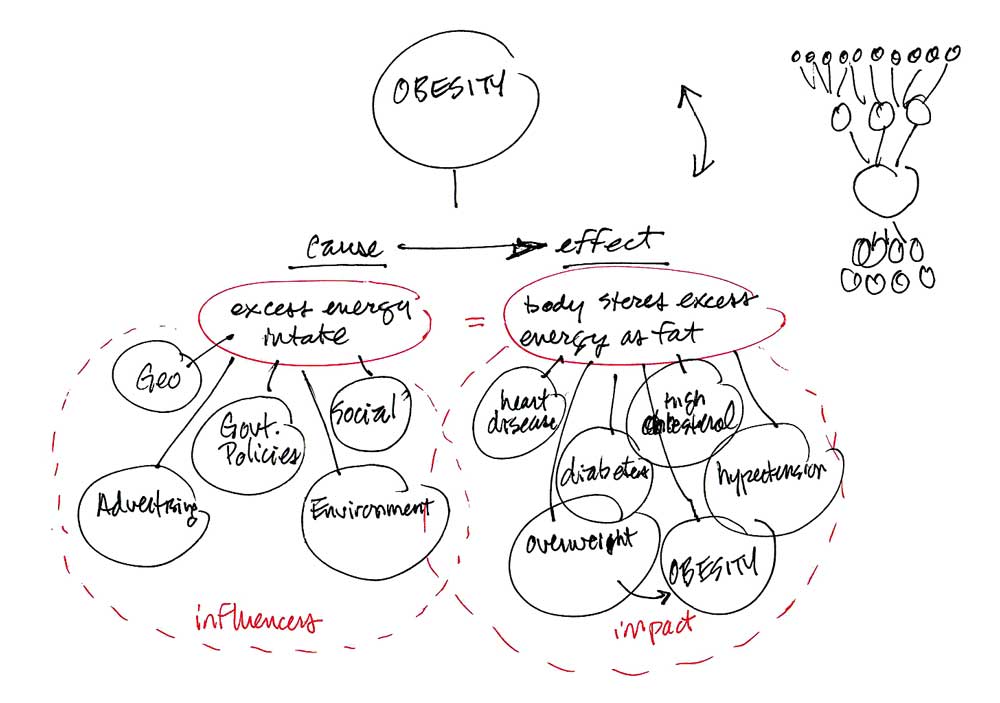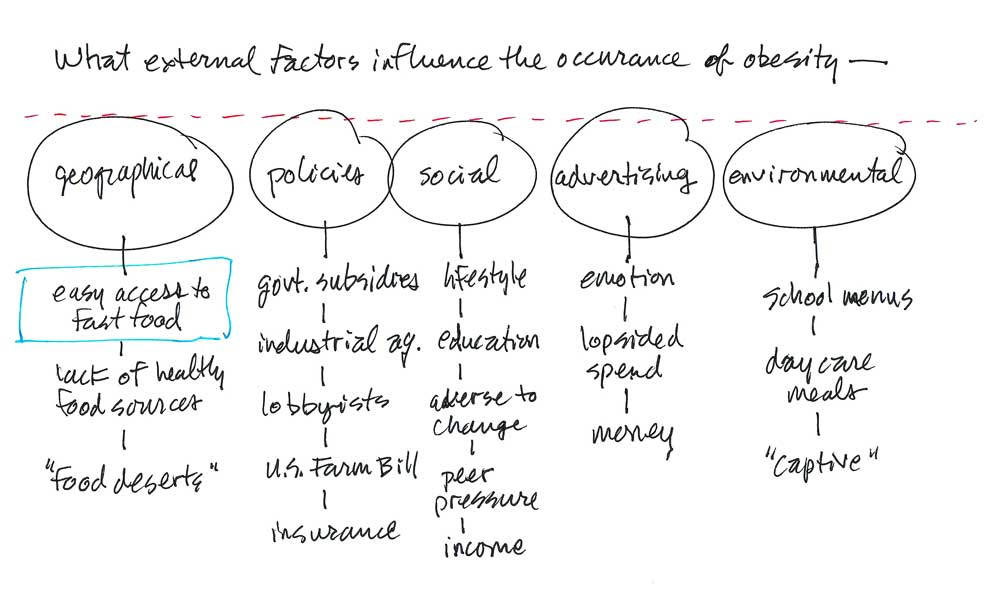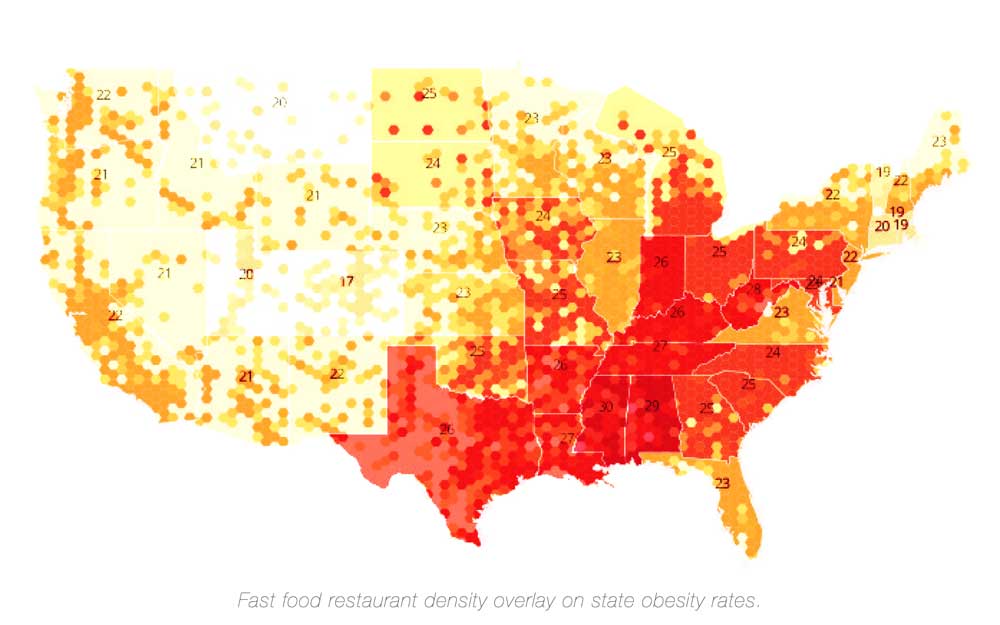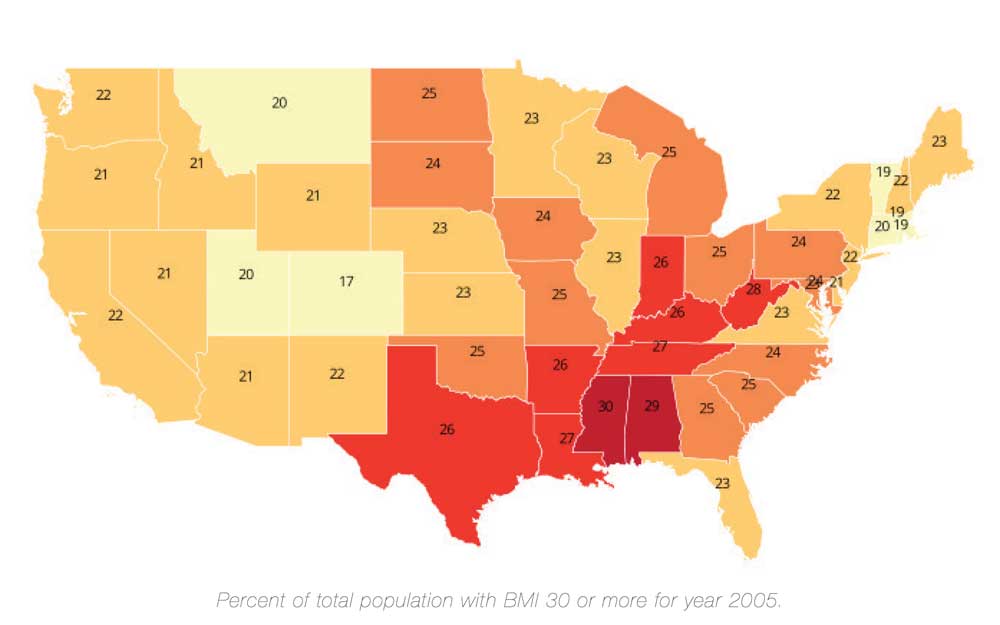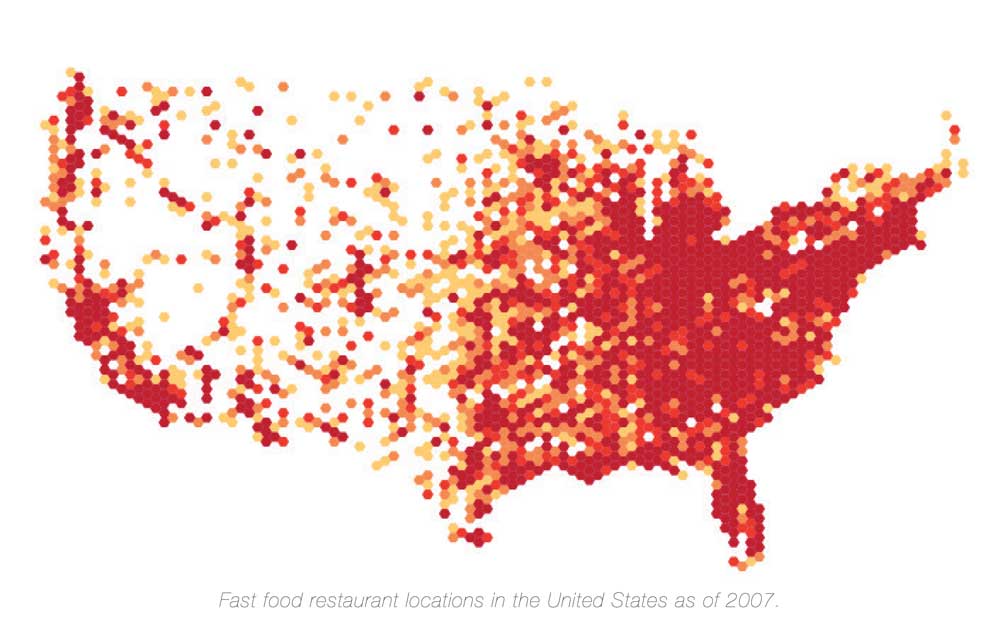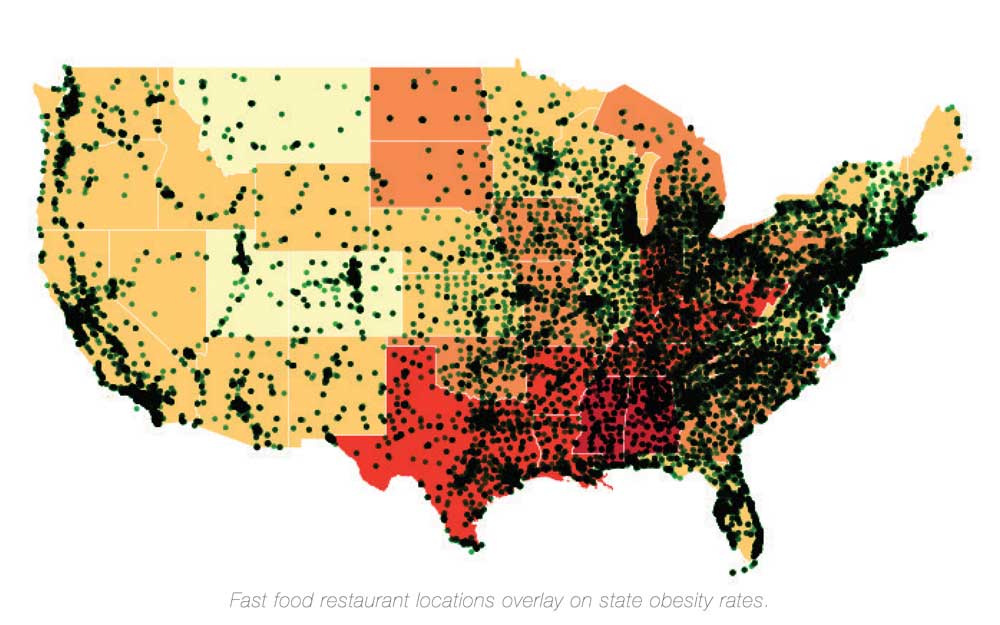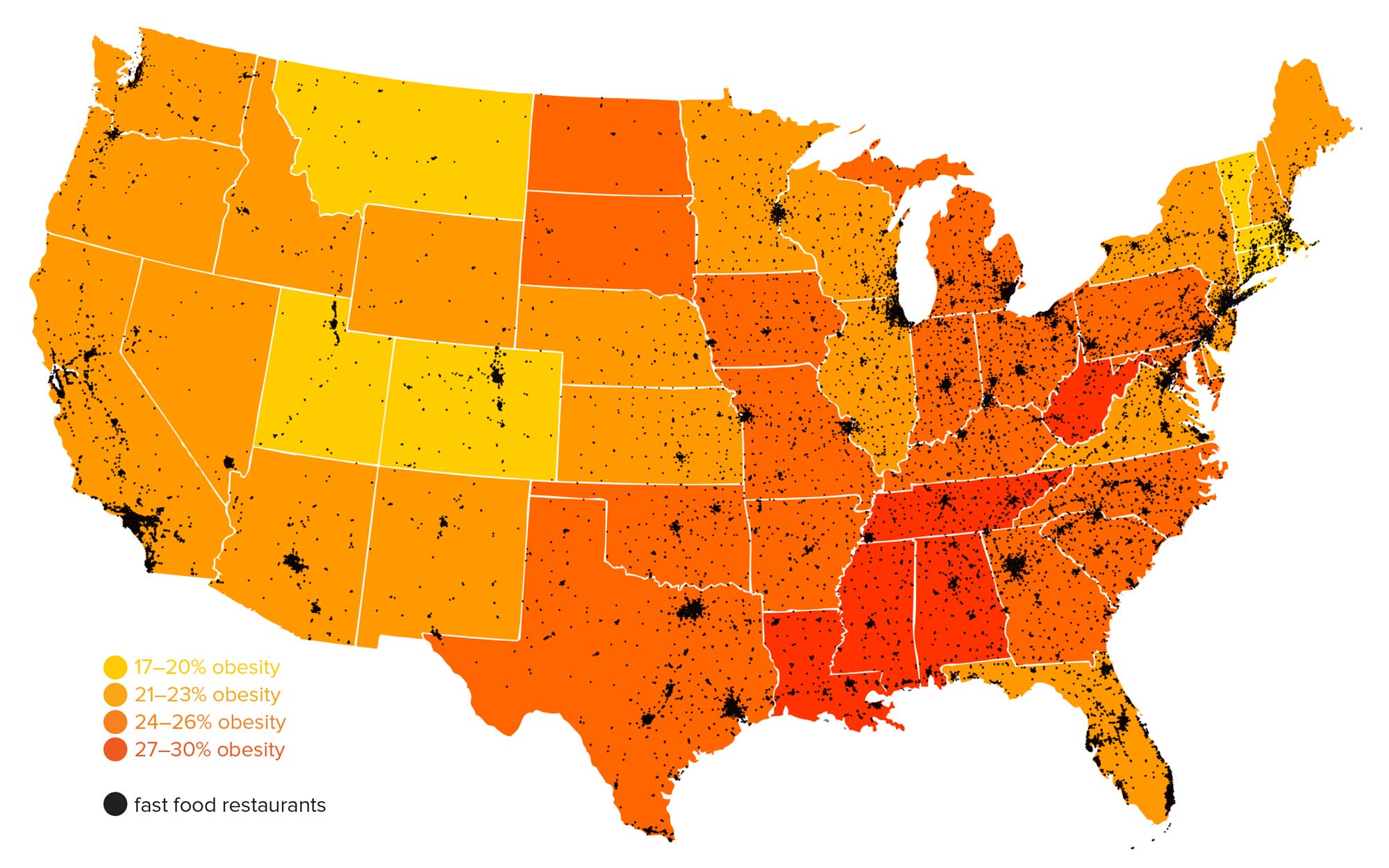Obesity and the Relationship with Fast Food Restaurants
THE PROBLEM:
More than one third of Americans are suffering from the most preventable cause of death. Obesity is the leading public health problem in America, lowering the quality of life and contributing to increased risk of coronary heart disease, stroke, high blood pressure, type 2 diabetes, gallstones, breathing problems and certain cancers (Trust for America’s Health, 2013).
Obesity is caused by an energy imbalance. Too much energy in (calories) versus not enough energy out (exercise, activity) causing the body to store the excess energy as fat. The energy, or dietary intake, is recognized as a modifiable determinant of body weight and successful strategies focus primarily on increasing the intake of fruits and vegetables and decreasing the consumption of sugar sweetened beverages and calorie dense foods. One of the most prominent contributors to “excess energy intake” is considered a geographical influencer. The easy access to fast food restaurants and limited access to fresh food and produce plays a significant role in the obesity epidemic.
THE QUESTION:
If fast food restaurants are a prime contributor to sugar-sweetened beverages and calorie-dense foods, is there a correlation between fast food restaurant locations and state obesity rates in the United States?
THE GOAL:
To explore the locations of fast food restaurants and their geographical relationship to state obesity rates in the United States. Is there a relationship between the incidence of obesity and easy access to fast food restaurants?
THE DATA:
The data for these maps and their associated overlays were retrieved from the USDA for fast food restaurants, and the CDC for state obesity rates. Obesity is classified as having a Body Mass Index (BMI) of ≥ 30 and higher.
RESULTS:
As expected, there is a direct correlation of higher state obesity rates in relation to easy access to fast food restaurants. The number of fast food restaurants in an area is proportional to the population density of the same area.
- As the population of an area increases so does the number of fast food restaurants.
- As the number of fast food restaurants increase so does the rate of obesity.
Alternative visualization that would not have brought important alignments to light.
CONCLUSION:
While the data visualization shows us what we expected to see, an increase in obesity in areas with a higher density of fast food restaurants, what it doesn’t show is that the same increase does not happen proportionately with grocery stores providing fresh produce. This phenomena produces “food deserts”. An area lacking access to healthy food sources and plays a much larger role in populations with lower incomes and limited access to transportation.

